
SUBSCRIBE TO OUR NEWSLETTER
Subscribe to our newsletter to stay informed about articles, events, and updates from Wellness Impact.

Subscribe to our newsletter to stay informed about articles, events, and updates from Wellness Impact.
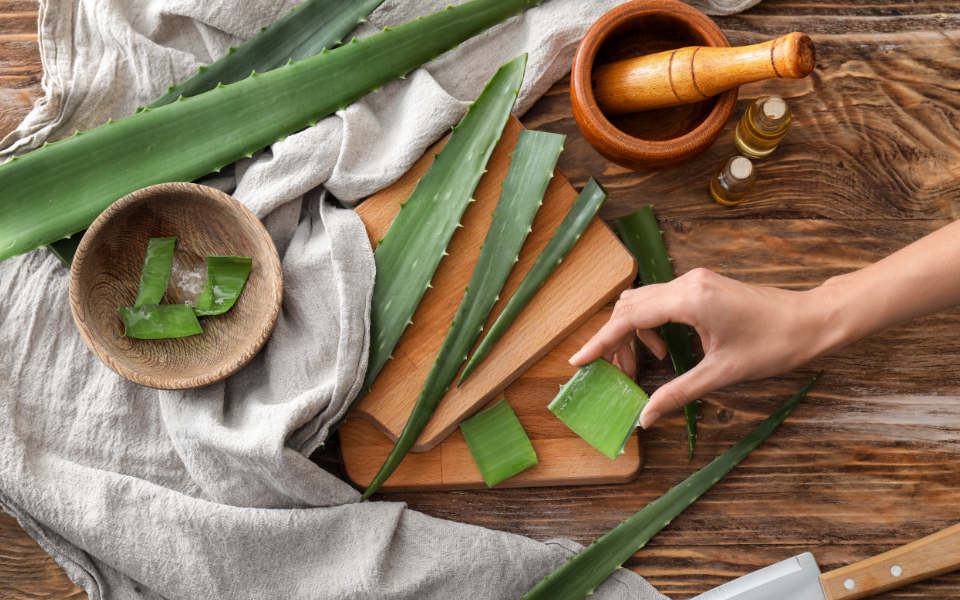
Welcome to Wellness Impact’s Ultimate Guide to Aloe Vera. Today we are sharing absolutely everything you need to know about Aloe vera. The Ultimate Guide covers the benefits, properties, and uses of Aloe vera. And for those of you who have access to fresh plants, we’ve added a recipe section. Here, you’ll find recipes using aloe vera for both humans and pets. Make your own Aloe vera drinks, aloe face masks, and aloe moisturisers
We have left nothing out. Besides the health benefits, there is also an extensive list of medicinal applications. But Aloe vera doesn’t need much of an introduction, as it has been used for centuries in the UK. Aloe vera is only one of over 500 aloe species, many of which come from Africa. In Africa, both traditional healers and ordinary people have been using varieties of aloes for well over 5,000 years!
In the West, Aloe vera is known for both its cosmetic value and its healing properties. You will discover what the benefits and uses are, what products are available commercially, and how to grow and care for your very own Aloe vera. A step-by-step guide takes you through the planting and propagating processes. It is an easy plant to grow and when given the right conditions, will flourish and produce offshoots that you can later split to multiply your Aloe vera stocks. The fresh pulp is needed for making effective face creams, body lotions, shampoos, conditioners, and gels.
Even your pets can benefit from the Aloe vera plant’s active ingredients, so we’ve added a section on how to use Aloe vera for pets. It includes recipes for making your own potions and lotions!
Before we get into the Aloe Vera origin story, we must clarify the name of this extraordinary and ancient healing herb.
So without further ado, let’s begin!

Aloe vera is the true species of the aloe we use. This name is spot on, as the word “vera” actually means true (from Latin)! The word “aloe” originates from the Arabic word, “alloeh”, meaning “shining bitter substance”. But we also find that the Greek word “alsos” means bitter juice. And in Hebrew, the word “allal” is used for “bitter”. This shows how widespread its use was in the regions stretching from North Africa into Arabia and the Mediterranean.
But when explorers discovered it, in typical pompous Western fashion, they decided to call it after those who “discovered” it. And then the name got complicated.
There are actually two different plants, one aloe vera plant is edible, the other is not. But there is still much confusion over the name. The following names get erroneously used as synonyms by botanists.
But in horticultural circles, it is defined differently. The edible version can be called by the following names:
And the inedible aloe vera is referred to as:
Thank you to Angelo from Deep Green Permaculture for relaying this information so clearly and concisely.
Just a note on the two varieties: Even though the spotted A.vera var. chinenesis is considered inedible does not mean you cannot ingest it. It must be treated first though. The yellow exudate has to be removed and because it is so prevalent in this aloe, it is advisable to always use the other type. The latex (exudate) contains the anthraquinones which give aloe vera its strong laxative effect. When prescribed by traditional doctors and herbalists it is safe but with so many other natural, safer laxatives, it is advisable to only use this aloe topically. Especially when you are taking it on your own and not under trained supervision.
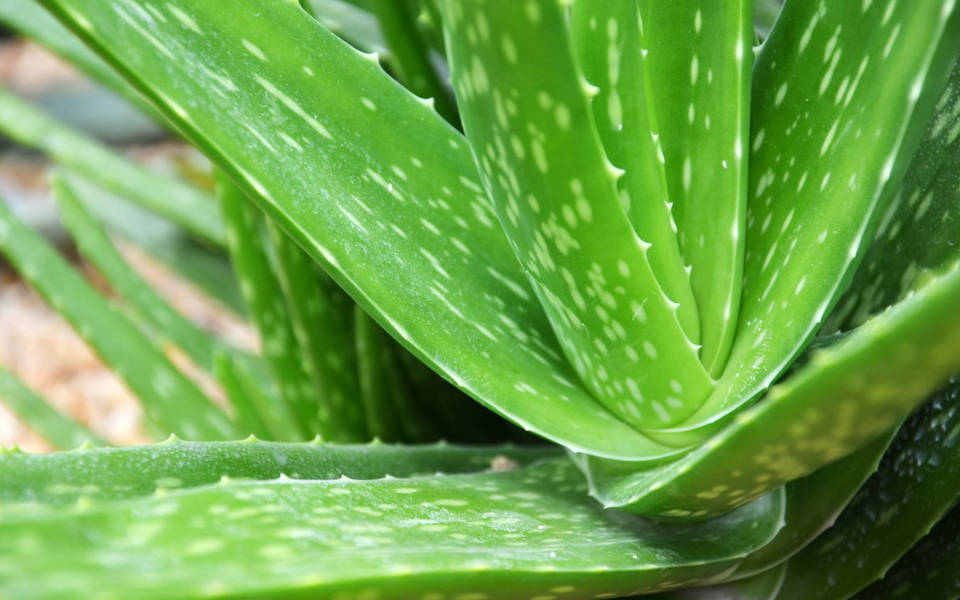
Unfortunately, the nature of the internet means this error is often not even acknowledged! The error, with regards to the name, dates back to the late 1700s when both names were printed around the same time, by two different authors. The quote below is from the San Marcos Grower site via Deep Green Permaculture.
“The scientific name assigned to this aloe has been changed several times in the last few years from Aloe vera to Aloe barbadensis and then back to Aloe vera. It seems that this controversy dates back to the two names being published a couple of weeks apart back in April of 1768. In “The Illustrated Handbook of Succulent Plants: Monocotyledons” (Edited by Urs Eggli, Springer-Verlag 2001) L.E. Lewis, the author on the section Aloaceae, lists the plant as Aloe vera (Linné) Burman and notes that Linné (Carl von Linné or Carolus Linnaeus) did not publish the combinations of Aloe vera as a numbered species and that Gilbert Westacott Reynolds in “The Aloes of tropical Africa and Madagascar” (1966) argued that the name should be A. barbadensis but had overlooked the combination published by N.L. Burman (not later than April 6, 1768), which has priority over Miller’s name [A. Barbadensis]. Lewis cites as reference for this information L.E. Newton’s article “In defence of the name Aloe vera” in the “Cactus and Succulent Journal of Great Britain” (1979:41-2).”
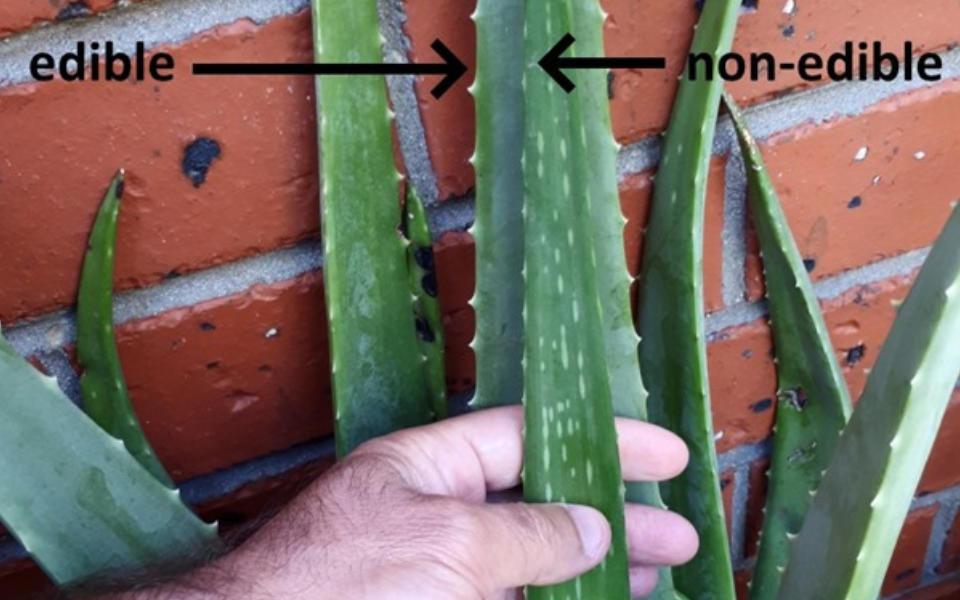
Aloe vera is the universal aloe for treating minor burns and wounds, insect bites, sunburn, eczema, and other skin disorders. It gets used internally and externally and it is from the Aloe vera that most other drug aloes get produced. Its use among various peoples of the world stems back over 5,000 years. Today the commercial value of this crop has not gone unnoticed and there is widespread cultivation in countries with subtropical climes.
Aloe vera is a stemless aloe. The leaves are thick and fleshy, forming solid, upright rosettes. The outer leaves (older leaves) get about 10cm wide from the base and taper into a tip. Leaves can get just over a metre long. New leaves form from the centre.
Aloe vera produces yellow flowers in winter. But because there are so many hybrids and variations, flowers can appear in yellow and orange. Some plants may even have flowers that are yellow at the top of the tall flowerheads and orange towards the bottom.
Aloe vera likes hot, sunny weather and poor soil, with good drainage. It can be grown indoors, as long as it is placed in a bright, sunny location. It cannot tolerate frost.
Aloe vera var. chinensis has orange flowers. It is also sensitive to frost.
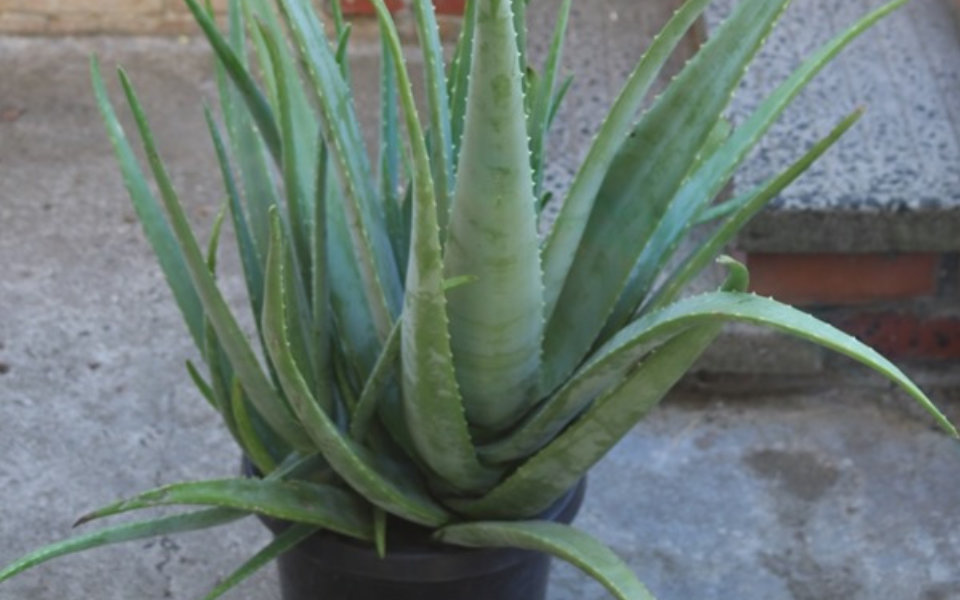
Aloe vera is originally from North Africa and Arabia. From here it spread to the Mediterranean region. Plants from this region eventually made their way to Central America. It became naturalised throughout the West Indies and is found growing wild, right down to Bolivia.
These countries cultivate Aloe vera for its gel, although traditionally other parts of the plant were used for various applications. In Africa, the roots were used to dye fabrics and rope. The flowers contain nectar enjoyed by birds and children. And the bitter compounds, found between the skin and the pulp, get used for treating digestive problems and worm infestations.
Aloe vera is cultivated for commercial use in East Africa, north-western India, southern China, and in the USA. In the US, Aloe vera is produced in areas that have subtropical weather. This is because it cannot tolerate frost. In very tropical climates, the aloe vera plant is susceptible to diseases like rust and rot.
While the north of Africa has Aloe vera, the south of Africa has its own version, Aloe ferox. Aloe ferox is a majestic, single-stemmed aloe with deep orange flowers that bloom in winter. To this day it is harvested for both traditional medicines and commercial export. The commercial product, known as Cape Aloes or Bitter Aloes, is used as a purgative, to treat intestinal worm infestations, to treat ticks and fleas on cattle and domestic animals, and even in cosmetics. When used for cosmetics, the inner pulp of the Aloe ferox is used, and not the bitter yellow exudate.
Traditionally, the leaves of the A.ferox are cut from the plant and packed in a circular formation around a lined hollow, in the ground. The sap is bled out and collected. From here it is processed, also in the traditional way. The result is a dark brown lump of Aloe resin. This becomes the Cape Aloes (Bitter Aloe), that gets exported around the world. This is likely the species often used in Chinese medicine, to treat worms.
Unlike the stemless Aloe vera, Aloe ferox is a single-stemmed aloe with thick, succulent leaves that also form rosettes. The leaves have brutal, thorny spikes along the edges and on the undercarriage. These spikes protect them from grazing wildlife, like the rhino. Sadly, this is no longer a problem for the Aloe ferox population of South Africa.
A far greater threat is posed by ruthless harvesting in the wild, by traditional healers, and vendors who sell the dried sap from roadside stalls and in local “muti” markets throughout the country. When harvested responsibly, not more than 8 or 9 leaves are taken from each plant. Legislation deems it illegal to harvest these plants from the wild. Fortunately, large scale commercial cultivation is widespread.
Aloe ferox has tall spikes of tubular, deep orange blooms, carried on candelabra-like flowerheads The nectar has narcotic effects if ingested in large quantities. The flowers attract sunbirds. The thick bitter exudate of Aloe ferox appears in far larger quantities than it does in Aloe vera. But it too contains a wonderful clear leaf gel that is made into a preserve, called “konfyt”. (Pronounced con fate). This is the indigenous “Afrikaans” word of the Boers. In English “konfyt” would be “confit”.
The dried leaves are ground up and made into snuff.
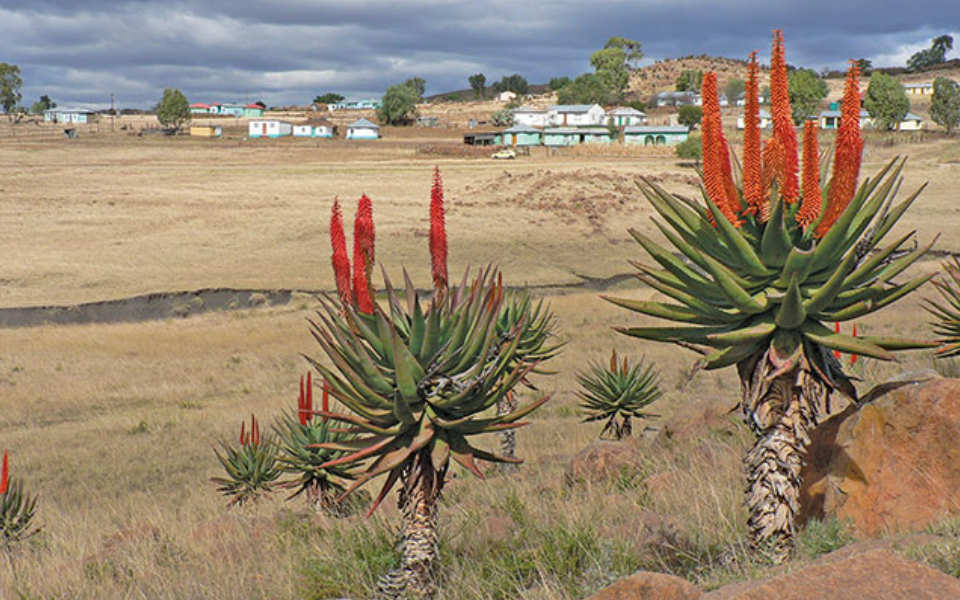
In China, Aloe vera is known as Lu Hui. They often use the spotted aloe (Aloe vera var chinensis). And although it is inedible and contains active ingredients that are cytotoxic and emmenagogic, it gets used both internally and externally. Internally, to treat worms and as a laxative. And externally for a wide range of skin complaints and injuries. It is advised never to take this aloe species internally, except under professional supervision.
Aloe vera was introduced into Japan by missionaries. They use it very much like the Chinese do.
The first recorded use of Aloes was found on a Sumerian clay tablet dated 2,200 BC. Although some sources say the use of Aloe dates back 5,000 years or more.
The Egyptians call it the “plant of immortality”. It was often buried with pharaohs, to take with them to the netherworld. Both Cleopatra and Nefertiti used aloe on their skin to keep them looking young.
Pedanius Dioscorides, wrote about it in his 5-volume medical journal, dated AD 40-90. His work was titled, Da Materia Medica. It was used as the official and primary go-to reference for over 1,500 years!
Pliny the Elder, who was a Roman philosopher, wrote about aloe vera in his book, “Natural History” (AD 23-79).
Native Americans know it as “the burn plant”.
The clip below shows the cultivation of aloe vera for commercial use. It is an excellent portrayal of how the plant is grown, harvested and processed into the gel that gets used in cosmetics and beverages.
Because aloe vera has been used for so long, individual cultures have embraced its healing properties to the extent that aloe vera appears in many homes. And it’s used as a herbal remedy by many different cultures. Let’s take a closer look at the many applications aloe vera has, across the globe.
Aloe vera gel is used in both the health and cosmetics industries. Its use in the food and beverage industry has increased dramatically over the last few years but the main commercial market remains with cosmetics.
Thanks to the burgeoning popularity of using natural health and beauty products that are free from harmful chemicals and artificial additives, aloe vera is getting used in a wide range of products. You can get almost everything imaginable made with the addition of aloe vera. Soaps, toothpaste, lotions, body butters, shampoos, conditioners, face masks, tonics, drinks, and more, appear everywhere. This is a big problem.
It’s a problem because of the fierce intensity with which it has been marketed. And while clinical trials and many studies have been successful in proving the extensive benefits of aloe vera, many commercial products do not contain enough of the healing compounds of freshly picked, unadulterated gel. So as with any product that contains natural ingredients, it is always prudent to do due diligence. Some products will contain enough of the active ingredients or they will use gel that has been stabilised to keep its healing properties active.
Disclaimer: Sadly, many of the aloe drinks are not effective healers and are sold using aloe as a hook, to market the product. But these products make no claims on having beneficial properties. It is up to consumers to decide why they are buying a product. Never buy something for healing or health benefits unless it states that it can be used as such.
But although the beverage industry is cashing in on aloe vera’s health benefits, the cosmetic industry has more room to breathe. There are many aloe products available for skin and hair care that do provide us with the properties aloes are famous for. And for those who enjoy making home remedies, aloe vera is one of the most reliable, safest, and easiest plants to use when making skin and hair care products from your kitchen.
The aloe juice, on the other hand, retains its healing properties, due to the nature of compounds like anthraquinone, that are present in the less active cells found in the juice.
When we understand the powerful properties of Aloe vera, it makes sense that it has the abilities it does. The gel is taken internally and used externally.
Internally the gel acts as a tonic, it cleanses, rejuvenates cells, stimulates repair, and relieves internal inflammation, especially in the gastrointestinal tract. This helps with conditions like colitis. When the bitter juice is taken with the gel it creates a laxative effect, sorting out constipation. Taking enough raw gel will also have laxative effects. It is far safer to use the gel internally, if self-medicating.
The Aloe ferox, on the other hand, is used far more for its juice than it is for the gel. The bitter juice contains Aloin and Aloesin, two compounds that are beneficial in treating skin disorders. If you take the raw juice, it may cause irritation and liver and kidney issues. But when it has been processed into the product known as Cape Aloes, or Bitter Aloe, then it can get used as a purgative, for constipation, for treating worms, and treating fleas and ticks on livestock and pets. It is also used to treat ophthalmia, arthritis and syphilis.
The cosmetic benefits are described in more detail below. But in terms of health, taking aloe vera gel internally has the following uses:
Aloe vera gel, whether used from a tube, from freshly cut leaves, or from a frozen supply, is an excellent wound healer. This is because it disinfects, reduces inflammation, and rejuvenates by stimulating blood flow to the area and increasing cell production.
Aloe vera (and Aloe ferox) juice has a myriad of healing properties. It is astringent, cholegogic, antibacterial, antifungal, antiviral, anti-inflammatory and a vermifuge.
This means it will heal wounds even more effectively than the gel. Also, it treats intestinal worm infestations. Bitter Aloe (Cape Aloe) is the bitter resin that can be taken internally. The spotted aloe is the variety you can keep on hand for external applications. And the edible, true aloe vera is what you need for your internal health.
Ideally, if you collect herbs and medicinal plants you will want both.
To use, break a leaf off (from the base) and apply directly to the skin. Cut the leaf into cubes, place in a container with a lid, and refrigerate. You will be using both the juice and the gel like this, thereby getting the demulcent properties of the gel as well as the astringent properties of the juice.
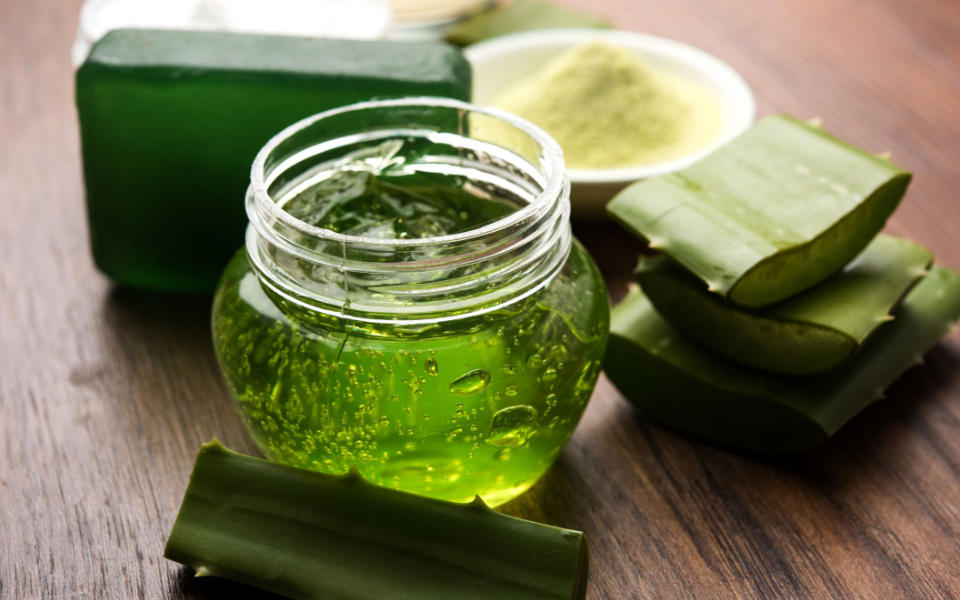
Although there are over 75 phytochemicals and compounds in the aloe vera, one polysaccharide, acemannan, has come under full scrutiny. Research has been funded by big companies and educational institutes alike. This is extremely good news.
So many of the Aloe vera’s healing properties cannot be scientifically quantified due to the lack of standardization. But in the case of acemannan, if it can be studied and tested in the correct conditions then it will legitimise the many claims made with regards to Aloe vera’s amazing array of benefits. The many uses that herbalists and natural health advocates trust aloe to deliver will be accepted by science and medicine.
Acemannan is just one of the many bioactive polysaccharides found in Aloe vera. According to a detailed review on the polysaccharide, acemannan, found in Aloe vera, the prospects can be summarized as follows: “the extraction, purification, structural characteristics, biological activities and pharmacological applications of acemannan will provide information for the industrial production and possible applications in dentistry and wound healing in the future.”
The review goes on to describe acemannan as having the following properties:
Aloe vera is an abundant source of polysaccharides, which are natural biopolymers. Aloe vera’s many functions have been attributed to the presence of polysaccharides. The study of these glyconutrients shows that upon acetylation the function of polysaccharides can change. Acemannan is a β-(1,4)-acetylated soluble polymannose. Pharmacological and biological applications of acemannan already get carried out in the treatment of “oral diseases, metabolic diseases, cardiovascular diseases, tumour diseases.” Much attention has been given, and studies carried out, with regards to acemannan but this review is of immense value as it is the first of its kind to summarize the full extent of acemannan’s importance to the field of medicine.
Aloe vera gel is the inner pulp of the plant. It contains polysaccharides with a jelly-like consistency, also known as pectic carbohydrates. In addition, you’ll find amino acids, vitamins (like C and E), minerals (like zinc), enzymes, trace elements, organic acids. Vitamins C, E, and zinc are wound healers.
The minerals include:
Judging by these trace minerals, we can see why drinking aloe vera will provide electrolytes and promote healing both internally and externally, to inflamed areas.
Between the outer “skin” of the leaf and the inner pulp, is a thin layer of bitter exudate. This is Aloe vera juice. This substance is loaded with a whole range of secondary metabolites and non-nutritive compounds. These biochemical properties are made up of:
Altogether this gives the plant the following properties:
The cosmetic applications for aloe vera are mind-boggling. Aloe vera has such a long list of beneficial, healing properties that the list of uses gets longer and longer. In the cosmetics industry, it is commonplace to see aloe vera products for everything.
Sometimes it gets added to commercial products that are loaded with artificial additives and synthetic ingredients. This is done as a marketing ploy and the addition of aloe to these products will seldom provide substantial health benefits.
But when aloe is used in natural products that are free from artificial and synthetic compounds, you can be sure it is present for a purpose. Here is a short list of natural products that use aloe, with a short description of why it is a useful component to the product.
Check out The Giving Nature Online Shop, for Aloe vera products.
Aloe vera works in toothpaste because it has these properties:
Practising good oral hygiene is more important than we realise. Not only can aloe vera bring relief to swollen or bleeding gums but it is also an effective “germ killer”. The bacteria found in our mouths would horrify you! Stopping bacteria and other infections at this point will prevent secondary infections.
Did you know that you can develop infectious arthritis from dental work?
Fortunately, this arthritis is curable. Aloe vera brings relief from arthritis due to its immune-boosting, anti-inflammatory, antioxidant, and analgesic properties. Much study has been given to acemannan (the polysaccharide abundant in A.ver gel) and its application in dentistry.
Aloe vera has the following properties that benefit skincare:
Aloe vera has the following properties that benefit hair care:
Aloe vera stimulates blood flow, which encourages new cells to form. This has multiple benefits. Not only does it heal skin injuries, but it also brings life back to the scalp. It is not uncommon for aloe vera to improve conditions of balding and thinning hair!
For face: Moisturisers, cleansers, toners, day creams, night creams, eye creams, face masques, problem skin, dry skin, oily skin, combination skin, sun-damaged skin, sunscreen lotions, sunburn lotions, acne.
For body: moisturising lotions, lotions for dry skin, body butter, creams for itchiness, bites, and stings, creams for cuts, abrasions, minor wounds, burns, creams for psoriasis and eczema.
For hair: conditioners, hair masques, shampoos.
This clip shows you how to prepare your aloe vera gel for the recipes below.
It clearly demonstrates how you should prepare your homegrown Aloe vera for use in hair and skin care products. And how you would prepare it for the skin and hair care aloe vera recipes below. But you will prepare it a different way if you use it for beverages, smoothies and aloe vera detox drinks.
You can buy aloe vera products to use on your face or you can make your own! See Wellness Impact’s recipe section below for DIY face mask recipes.
Aloe vera is an emmenagogue. This means it has the power to stimulate the uterine. This action can bring on a late period. It also means it acts as an abortifacient. So it is definitely not safe to take internally when pregnant.
Using aloe vera topically over a small area should not be detrimental. The aloe’s emmenagogic properties are rendered useless when applied topically. Certain properties in aloe juice (the latex between skin and gel) can be transferred to breast milk. So taking aloe vera as a laxative during breastfeeding is also not advised.
Aloe vera gel is safe to use internally.
But using the Aloe vera latex is not as safe. Taking 1g daily for more than three days could lead to kidney failure, which could be fatal for some individuals. Previous reports that the latex was possibly carcinogenic have been disproved by the FDA, citing the incorrect Aloe was tested. The Aloe tested was not the same as the Aloe vera used in Aloe drinks and other health products.
Taking whole leaf extract (includes gel and latex), as opposed to only taking the gel, may be unsafe for some. Aloe vera can clash with certain medications, specifically those prescribed for:
Aloe may reduce the absorption of some of these drugs, rendering them less effective, or in the case of laxatives, overstimulating. It may also reduce potassium levels when taken with diuretics (water retention tablets). It can upset the blood sugar levels of diabetics on certain medications, and it may thin the blood too much if it has been used internally before an operation that requires anesthetics.
If you are taking meds for arrhythmia, do not take Aloe latex internally. If you are taking a drug, like Digoxin, lowered potassium (from Aloe) will increase side effects of this drug, which is also sold as Lanoxin.
Don’t let staying in an apartment stop you from growing your own beautiful Aloe vera. Follow these easy steps to transplant your nursery-bought Aloe into its new container.
You will need:
Instructions:
To transplant your aloe from a potto the open ground, all you need to do is dig a hole the depth of the existing pot. Remove the plant as above. Place in the hole and add new soil. Give it a good watering.
Your aloe vera plant will soon start producing “pups”. You can grow aloe vera from seed and leaf cuttings but these methods are not always easy or successful. The best way to propagate aloe vera is to separate the pups from the mother plant.
The clip below leads you through the process and also tells you how to care for your aloe vera plant.
Aloe vera needs a sunny spot and it cannot tolerate frost. So if you do stay in a region that gets frost, make sure your aloe is in a pot that can be placed inside during the months when frost occurs.
Make sure the soil is well-drained. Feed every 3 weeks in summer with nitrogen-based organic plant food. Don’t feed in fall and winter.
Water weekly in summer months and less during winter. Do not overwater. Although aloes can tolerate some wind, it is always better to pace it in a position that gets as little wind as possible. This will provide you with better quality, plumper leaves.
Aloe vera is an effective, natural remedy to use on your dogs and cats. It is used to treat the same skin disorders humans have. Its soothing, cooling effect makes it suitable to treat minor wounds, small cuts, burns, and skin irritations. Some animals are prone to sunburn and using aloe vera on the affected areas works just as well as it does on humans.
Applying the inner gel from an aloe leaf will also bring relief from eczema on pets. And it will reduce the itching caused by tick and flea bites. It will not prevent the fleas and ticks from biting though.
Dermatitis and other allergic reactions can be treated with aloe vera gel. The high water content makes it easy to apply as it is absorbed readily into the skin, making it a practical remedy to use. Often pets ointment is set in a petroleum base or an oil-based substance. This makes it more likely to be licked off by pets before an ointment is absorbed.
It is not recommended to use aloe vera internally for pets. Although studies on acemannan show potential when it comes to treating certain tumours and cancers in animals.
Aloe vera gel contains sterols. One of these is in the form of salicylic acid. It acts as an anti-inflammatory and is a broad-spectrum antimicrobial.
The following recipes come from a book by Elizabeth Whiter and Dr Rohini Sathish MRCVS. The book is titled, “You Can Heal Your Pet – The Practical Guide to Holistic and Veterinary Care”.
Ingredients:
Xanthan gum is a natural additive often used to thicken gluten-free and vegan recipes. It’s available from health food stores and online. Vitamin C powder is a natural preservative, also readily available.
Method:
Place all the ingredients in a blender and blend until a thick consistency is achieved. Decant into a glass jar with a lid. Label it and store in the fridge for up to 1 month.
Apply topically to affected areas when needed. You can apply three times a day. Do not apply to the face or genital area.
You can add bladderwrack to the basic gel and apply to swollen and arthritic joints. Bladderwrack is nutrient-dense and has many healing properties. It is an effective anti-inflammatory.
Add 115g bladderwrack, that has been steeped in hot water overnight.
Strain the bladderwrack.
Add 6 tablespoons of the aloe vera basic gel
Add ½ teaspoon xanthan gum.
Blend until the gel is smooth. Store the same way as for basic gel and apply topically as needed.
If the inflammation is taking a long time to heal, you can replace the bladderwrack with 115g yarrow leaves and flowerheads. Crush yarrow lightly before steeping overnight. And prepare as above.
As you have seen above, it is easy to clean and prepare aloe vera gel for use in home remedies. Once you have the gel on hand you can use small quantities, as needed. Try these simple recipes and let us know how yours turned out.
It is quick and easy to whip up an aloe vera face mask once a week, using a small amount from your basic aloe vera gel. To make the basic gel just follow the instruction on the video above, or use the same method as described for the basic aloe vera gel for pets. You can also add a few drops of vitamin E oil or an essential oil blend of your choice. It just depends on what you are using the gel for.
Method:
Aloe vera gel is a gentle, yet deeply moisturising conditioner. To prepare just follow the instructions in the video clip above, in the section titled, “How to use fresh aloe vera gel for skin and hair”.
Once you have the aloe prepared, you can wash your hair with shampoo and then instead of using conditioner, replace it with the aloe vera. Alternatively, you can use commercial shampoos and conditioners that contain aloe vera.
Another technique is to add fresh aloe to your shampoo. You would take out the amount of shampoo or conditioner that you need and then add 6 tablespoons of the prepared aloe to it. Use as normal.
If you enjoy using essential oils you can experiment. Every time you wash your hair you can try a different blend of fragrances. Lavender, vanilla, tea tree oil, and neroli all work well with shampoos and conditioners. In this case, it works well to decant your aloe gel preparation into the container you will use. To this add 3-6 drops of your essential oil. Shampoo your hair as normal and then condition using the aloe gel with added essential oils.
Use the edible aloe vera. Clean and prepare the fresh leaves. You can clean off the latex or skip this step. Skipping this step will provide a slightly laxative effect if large amounts are taken, beneficial when detoxing.
Add 1 cup of cubed aloe gel to a 2l jug of water. Add 12 slices of cucumber (optional). You can also sweeten with stevia. Refrigerate.
When the jug is about two-thirds empty you will notice that the liquid is quite thick from the aloe gel, just add more water and continue drinking. You can repeat this step twice.
This homemade aloe drink is refreshing and acts as a very gentle detox drink. Don’t drink this mix every day. It is okay to do this twice or three times a month, over three days at a time.
Serves 2 – 4
Ingredients
Blend all the ingredients. Add more coconut water according to your preference. You may sweeten with stevia or erythritol if you have a sweet tooth.
As you can see, often natural remedies are used by those who trust the healing nature of plants. But, due to lack of scientific evidence and clinical trials that yield concrete results, many of our medicinal plants get overlooked and downplayed by the medical profession. So the trials on Aloe vera’s acemannan are very exciting.
When we choose to use natural products responsibly, we benefit. Not only do we gain but we also get to give back. Supporting natural and alternative living is a choice. And even if we rely on medicines for some things, it is a good balance when we can do both. Using natural herbal products are gentle on the skin, generally safe for pets and children, and it gives us a chance to reconnect to our ancient roots.
When we try to live naturally, we reconnect to nature. Aloe vera is a fine example of how magnificent a humble plant can be.